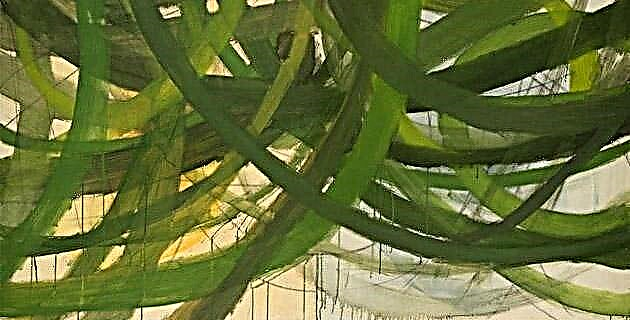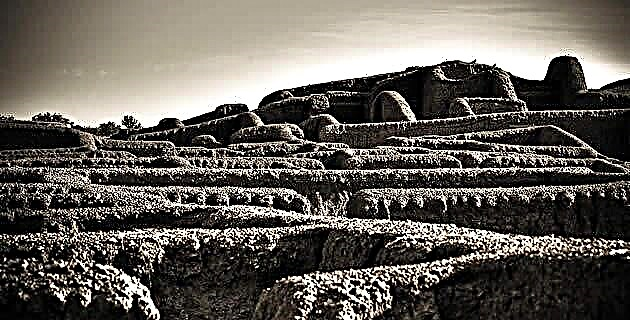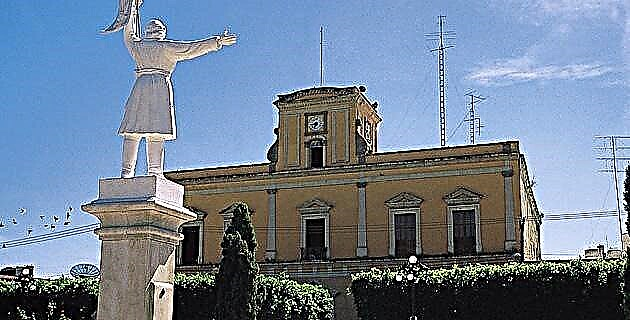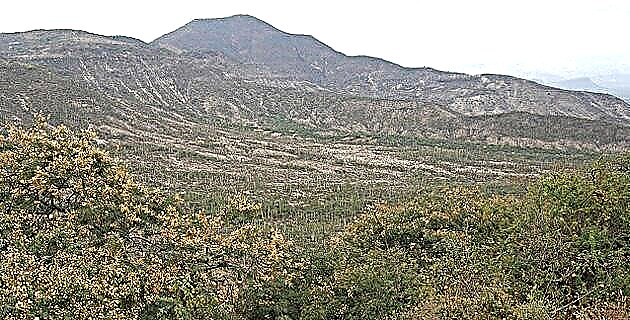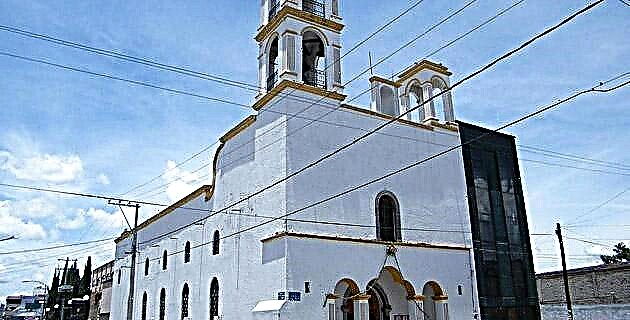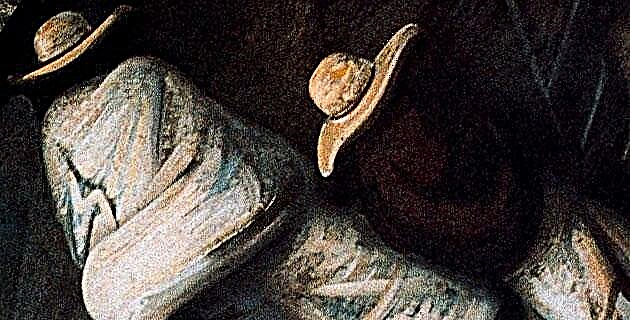
David Alfaro Siqueiros, born on December 29, 1896, in Santa Rosalía, today Camargo, Chihuahua, was enlightened by the movements that shaped the century.
In the fever of his adolescence, he got involved in the strike at the San Carlos Academy in 1911. This movement not only caused a radical and definitive change in the educational application of art in the country, but also turned him into an Army soldier. Constitutionalist in the West, under the command of General Manuel M. Diéguez. With the rank of second captain, and the ascent of Venustiano Carranza to the presidency of the Republic, he was sent to Europe as a military attaché for the embassies of Spain, Italy and France, in 1919. He took advantage of this period to meet and interact with the main European avant-gardes and their exponents, and to study the art of the Renaissance, which he had known through his teacher Gerardo Murillo, Doctor Atl, at the National School of Fine Arts.
In Paris, Siqueiros met Diego Rivera with whom he shared the breath of the Mexican Revolution and established a friendship that would last the rest of his life. He returned to Mexico in 1922 - at the invitation of José Vasconcelos, then Secretary of Public Education - to join the painters who made the first murals at the San Ildefonso National Preparatory School. To make his first mural he chose the cube of the staircase in the courtyard of the "small school". At the end of his term, Vasconcelos was relieved of his post by Manuel Puig Cassaurang who pressured the artists to abandon their open communist militancy. Failing to do so, Siqueiros and José Clemente Orozco were expelled from their murals to which Siqueiros would never return.
The work of dissemination and activism of communist thought through the newspaper “El Machete”. that went from being an informant for the Union of Revolutionary Painters, Sculptors and Engravers to function as the main organ of dissemination of the Mexican Communist Party. They led Siqueiros to carry out an intense campaign to build and organize unions, becoming Secretary General of the Workers' Confederation of Jalisco.
In 1930, Siqueiros was imprisoned for participating in the May 1 demonstrations, and was later confined to the city of Taxco in Guerrero. There he met William Spratting who supported him to continue painting. Two years later, Siqueiros traveled to Los Angeles, California, to hold various exhibitions, and teach muralism classes at the Chouinard School of Art, invited by Millard Sheets. He formed a team that he called the American Block of Painters and taught muralism by painting it. He made the mural Meeting on the Street, which was deleted shortly after for having included people of color in the subject, in addition to having shaped an eminently political discourse. His team grew and he was commissioned a new mural at the Plaza Art Center. This mural also caused irritation and was ordered to be erased first partially and then completely. During his stay in California, Siqueiros was already recognized as having a personal style.
Siqueiros continued a career always nuanced by his social activism, with his personality as the trigger for scandals and clashes with the authorities. It was around 1940 when -the first Mexican hobbies for collecting arose- which set the tone for an unprecedented artistic patronage in our country. The new art fans harbored a feeling identified with nationalism and were part of a peculiar Mexican business community that found unknown values in the post-revolutionary process. One of these was the fondness for the beauty of the spiritual that does not seek in the purchase of art a fixed-term investment, but rather collects a meticulous selection of affinities and emotions that translate into a treasure to be shared with others. Licio Lagos Terán is an example in which elements of the intimate singular converge, where a will for the national and the universal coexists with the same passion, a prototype of the nationalist businessman who does not neglect the rational work of his people and of artists from the unexpected entails of chaos.
The artist has walked hand in hand with the patron to this day, inheriting the trade of collecting for posterity, the human being has found nobler reasons to join art, among others the devotion and intuition that act inside as a faith towards the improbable, since art has become overcrowded and in its diversity mixes the spiritual and the profane, the pure and the perverted, the artificial with the natural. But to know what moves an individual to acquire a work, it is essential to review their vocation.
By obligation we must ask ourselves, what would have happened to Mexican art and its authors, without Licio Lagos, without Alvaro Carrillo Gil, without Marte R. Gómez, who, along with others, risked their resources only because of their trust in the unknown. What would have become of our artists not infrequently burdened by scarcity and need? The collectors of the first half of the century practiced patriotic patronage where friendship with the artist was at stake, rather than economic gain; daily intertwining the sentimental threads that unite the task of creating with that of collecting what is created. Licio Lagos Terán found himself one afternoon in 1952 at the Misrachi Gallery with the painting Caminantes, painted by David Alfaro Siqueiros that same year. Without a doubt, in love with the subject, where two cloaked figures walk without a specific objective, the work reflects the formative coincidence between Lagos and Siqueiros. Both left their home provinces and faced uncertain destinies -like those of every traveler-, the painting describes the drama between the origin and the exodus, resurfacing the nostalgia of the emigrant, who when leaving unpredictable, begins to wonder.
Licio Lagos Terán was born in Cosamaloapan Veracruz in 1902, Siqueiros, in Chihuahua, both lived the events of the birth of the Republic. The first was sensitized for life by the capture of the Port of Veracruz carried out by the North Americans on April 21, 1914, while the second was cradled between Juarista rudeness by his grandfather Antonio Alfaro, "Seven Edges" who had fought in the armies of Juárez against foreign invasions. Both headed to the capital of the country to continue their professional training: Licio Lagos at the Faculty of Law, Siqueiros at the National School of Fine Arts.
While Licio Lagos was training as a lawyer, Siqueiros served as a revolutionary captain. In 1925, Licio obtained his professional title and Siqueiros registered as a muralist. In 1929, the lawyer Lagos founded his firm of legal advice to companies, years later becoming President of the Confederation of Industrial Chambers. Siqueiros was at the climax of his prolific union work. Despite the differences they undoubtedly had, Licio Lagos and David Alfaro Siqueiros struck up a significant friendship. Worthy and cuddly, eloquent and shrewd, the stain that shapes Caminantes describes a chilling situation: the persistent migratory destination of the province to the cities. Siqueiros always contemplated the need to express eloquent signs in the studies that he developed for his murals, there is no doubt that this painting has told him much about what he was looking for.
Licio Lagos acquired the second and third paintings from Siqueiros himself, they were Volcán (1955) and Bahía de Acapulco, (Puerto Marqués 1957). Both are inserted in the period in which Lagos insisted on obtaining the most splendid collection of Mexican landscapes known to date. It is thought that the next work was Sonrisa Jarocha, painted expressly by the artist, in an effort to capture in a single work all the genius and appreciation of Veracruz blood, especially due to the observation made in his memoirs They called me the Coronelazo ( 1977), where he describes the impact caused by his youthful stay in the port and his coexistence with "beautiful Jarocha women."
In 1959, Siqueiros sympathized with the strike that the Mexican railroad workers had undertaken and was imprisoned for the crime of social dissolution, in the Black Palace of Lecumberri, between 1960 and 1964. When he was put in prison, economic constraints reached the family and the team of assistant muralists. Without hesitation he went to his friends; one of them was Licio Lagos, who extended his hand to him by acquiring four other original paintings. Among these El beso (1960), in which a mother transmits her passion for life to her son. The question asked a hundred times is how such appreciation could flourish between a radical communist like Siqueiros and an employer lawyer like Licio Lagos; the answer is found in the painting The distribution of used toys to poor children of the Mezquital (1961), a true specimen of the philosophical doctrine of art linked to humanism. This work describes a restless and desperate crowd, tense with desires, before a couple of ladies dressed in furs who at their feet hold a huge drawer with used toys. Between hypocrisy and false compassion, Siqueiros illustrates with rhythmic strokes the small club of the wealthy who rule by giving what is left over to the poor, something in which Licio Lagos agreed with the muralist, in the understanding that the need does not it must be taken advantage of by unconscious vanity, nor by conscience disguised as a gift. Licio Lagos placed the painting together with the exalted re-creators of beauty in the peacefulness of his home, which reveals some walls attached to the lucidity of its builder.
Three lithographs complete the collection. The first is the segment of the mural Muerte al Invasor, painted by Siqueiros in Chillán, Chile, where the heads of Galvarino and Francisco Bilbao merge in a cry of rebellion against the invasions of the empire and indigenous subjugation in which Siqueiros demonstrates his esteem by Lagos in the dedication: “For the lawyer Licio Lagos, with the renewed friendship of the author. On the eve of the new year 1957. " One more is Man tied to the tree from which studies that would later work for the Poliforum emerge.
More than one hundred years after Siqueiros and Licio Lagos, the serenity with which two different beings parted their distances with a formidable pretext never ceases to amaze us: love for art, passion for the complex sublime essence of man.


